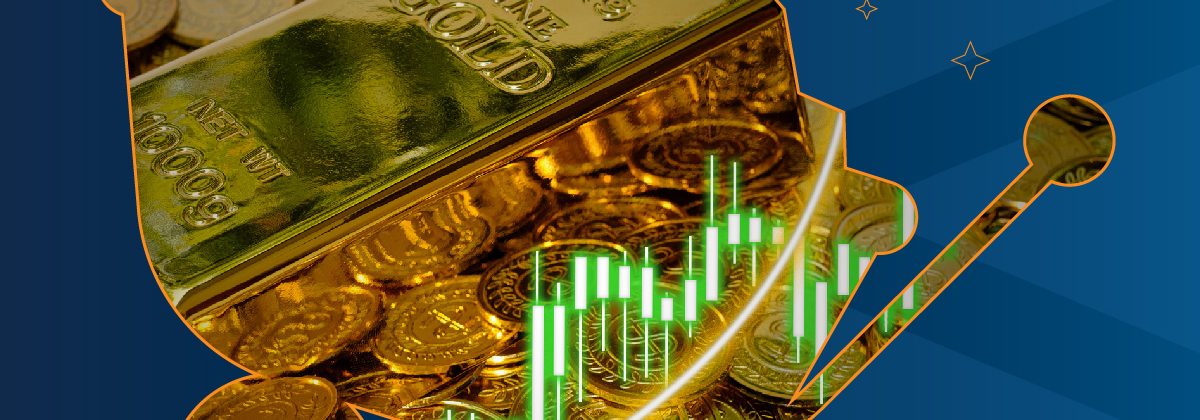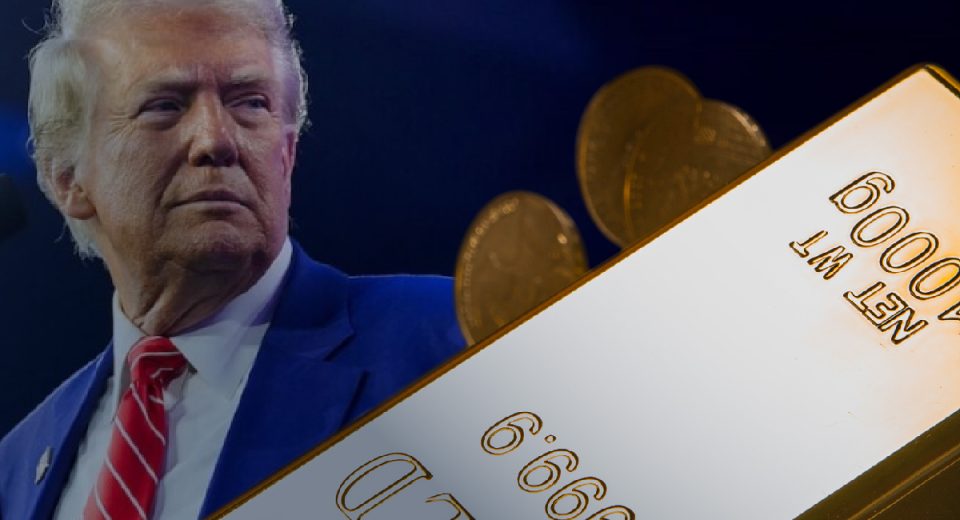Central Bank Gold Purchases: Forecast and Impact on Gold Markets

Gold has been one of the best-performing assets worldwide in 2024. Much of this performance has been driven by central banks increasing their reserves of the precious metal. Official gold reserves rose by 290 metric tonnes in the first quarter of 2024, the largest quarterly increase since 2000 and 69% above the 5-year quarterly average. In May alone, central banks globally reported purchasing 10 metric tonnes of gold. Plus, the 2024 Central Bank Gold Reserves Survey revealed that 29% of central banks intend to increase their gold reserves over the 12 months from April 2024.
Here’s what you should know to refine your gold trading strategy.
Why are Central Banks Fortifying Gold Reserves?
Central banks keep gold reserves to hedge against inflation, mitigate risk and promote economic stability. Over the past few years, growing concerns regarding an impending global economic crisis have led central banks to shore up their gold reserves. In addition, ongoing geopolitical tensions with the Russia-Ukraine conflict and the conflict in the Middle East have also increased focus on ensuring adequate gold reserves. In 2023, central banks increased their reserves by 1,037 tonnes, the second-highest annual purchase in history, after the all-time high of 1,082 tonnes of gold added in 2022.
The planned gold purchases by central banks are primarily driven by a desire to rebalance their gold holdings to strategic levels given the stubborn inflation, financial market concerns and increased concerns regarding economic risks to their respective countries.
Central banks of emerging economies are likely to continue purchasing gold to diversify their forex holdings away from the US dollar. This is largely due to concerns among emerging economies, especially countries like China and Turkey that are not allied with the West, regarding sanctions against Russia’s USD-denominated assets. These countries accelerated the diversification of their reserves following the sanctions.
The People’s Bank of China has been aggressively buying gold for 18 consecutive months, to May 2024, after the yellow metal soared to record highs. Investment demand for gold has also remained strong in China, the world’s largest consumer of the precious metal. Gold demand has also been driven by China’s real estate crisis, which has limited options for retail investors.
Gold Price Outlook for H2 2024 and Beyond
The current economic climate and geopolitical situation are expected to keep gold demand from central banks up during the second half of 2024 and possibly into 2025. Central banks account for about 25% of the global gold demand. Increased purchasing by central banks boosts gold prices.
In addition, the US CPI data for June revealed a 0.1% decline in inflation from the May level, taking the 12-month rate to 3%, the lowest since the pandemic. This has bolstered market expectations of the Fed cutting rates twice this year, in September and December. Softening inflation in the US is likely to drive gold demand higher, as are the ongoing conflicts in the Middle East and Ukraine.
Data released by the US Bureau of Labour Statistics reveals a cooling in hiring and wage growth in June with a slight increase in the jobless rate. This has led to swap traders pricing in a 75% probability of a Fed rate cut in September.
Spot gold price was up 17.87% YTD to $2,431.035, as of July 16, 2024, making it one of the top-performing assets of the year. The yellow metal’s safe-haven status led to gold price rising to a record high of $2450.05 in May, despite the Federal Reserve postponing rate cuts, the strength of the US dollar and divergence of US Treasury 10-year yields with gold prices and ETF holdings. The positive momentum is expected to persist during the second half of 2024.
With US interest rates remaining elevated, the opportunity cost of holding non-yielding assets like gold increases. Interest-bearing investments such as bonds become relatively more attractive because they can generate income through interest payments. As a result, investors may choose to shift their capital away from gold and toward assets that can provide a yield or return based on the prevailing interest rates. So, make sure you conduct thorough technical and fundamental analysis before implementing your trading strategy.
With both the Fed and ECB expected to continue to cut interest rates in 2025, gold price is likely to continue to increase. Gold prices will also be supported by continued demand from retail investors and central banks.
So, most factors that propelled gold prices to record highs in the first half will also support the price of the yellow metal in the second half. One of the key drivers of gold has been wealth protection against the backdrop of rising prices and the erosion of the purchasing power of fiat currencies following years of higher-than-expected inflation. In fact, gold was able to hold its price despite interest rates being kept higher for longer at multi-decade highs and higher bond yields offering attractive nominal returns on government debt, which is also considered a safe-haven asset.
If economic data continues to support expectations of rate cuts by central banks, gold price will remain strong, since the precious metal is historically negatively correlated with interest rate forecasts.
If future wage and inflation data show price pressure stickiness, it could delay policy normalisation and keep interest rates up for longer than expected. Gold’s record highs earlier in 2024 were driven partly by expectations that rates would be cut multiple times through the year. However, the Fed has defied expectations, supporting the strength of the greenback, especially against the Japanese yen. However, the USD strength has not significantly affected gold prices so far this year. If a more sustained and significant dollar rally occurs and bond yields rise, it could affect the appeal of gold in H2.
It is important for traders to keep an eye on economic and geopolitical developments to fine-tune their gold trading strategy and make the most of price moves.
Disclaimer
All data, information, and materials are published and provided “as is” solely for informational purposes only, and is not intended nor should be considered, in any way, as investment advice, recommendations, and/or suggestions for performing any actions with financial instruments. The information and opinions presented do not consider any particular individual’s investment objectives, financial situation, or needs, and hence does not constitute as an advice or a recommendation with respect to any investment product. All investors should seek advice from certified financial advisors based on their unique situation before making any investment decisions in accordance to their personal risk appetite. Blackwell Global endeavours to ensure that the information provided is complete and correct, but make no representation as to the actuality, accuracy or completeness of the information. Information, data, and opinions may change without notice and Blackwell Global is not obliged to update on the changes. The opinions and views expressed are solely those of the authors and analysts and do not necessarily represent that of Blackwell Global or its management, shareholders, and affiliates. Any projections or views of the market provided may not prove to be accurate. Past performance is not necessarily an indicative of future performance. Blackwell Global assumes no liability for any loss arising directly or indirectly from use of or reliance on such information here in contained. Reproduction of this information, in whole or in part, is not permitted.




